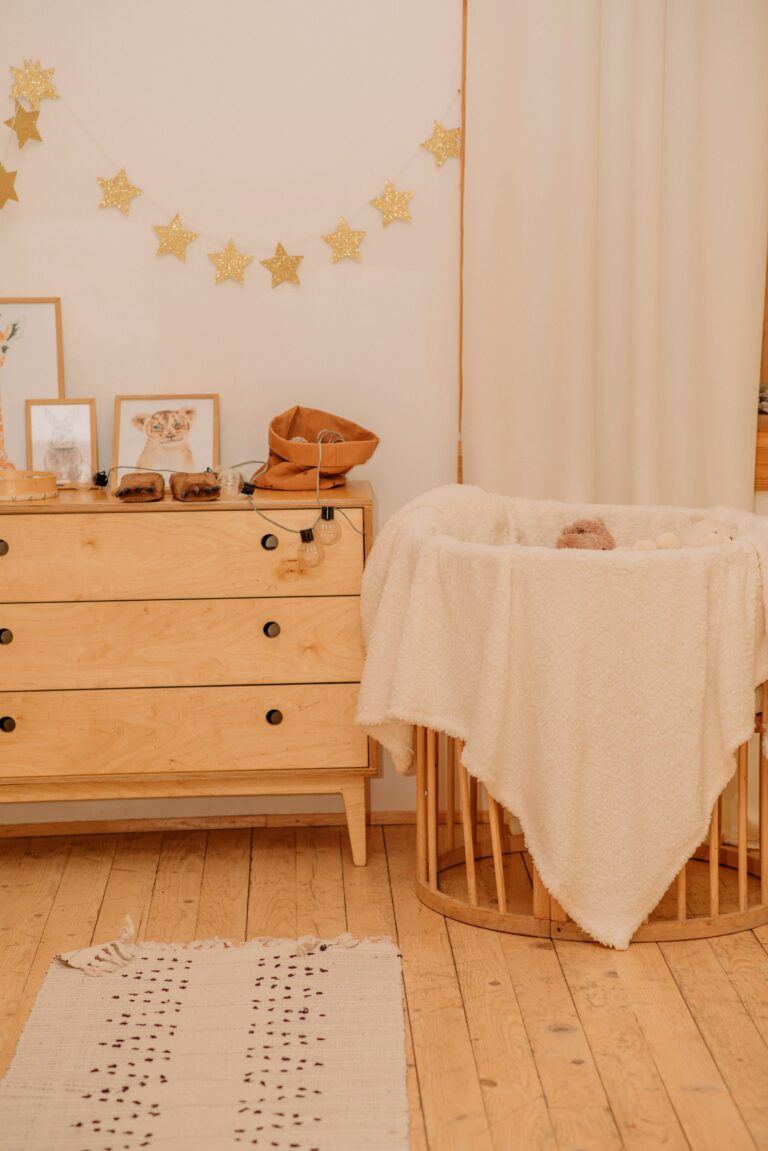The first days after a cesarean section bring a whirlwind of sensations—relief, exhaustion, the sting of an incision, the tentative flutters of new bonding, and the immense responsibility of caring for a tiny, demanding human. Many parents, feeling both awed and anxious, ask themselves: when will the body feel “normal” again? Will pain linger, or can certain steps make daily life smoother, gentler? This journey of postpartum rehabilitation after cesarean isn’t just about wound healing or waiting for sutures to dissolve—it’s a blend of physical strengthening, nurturing emotional balance, mastering safe baby care, and finding your rhythm amid fatigue. Curious to know how pelvic muscles, breathing practices, and a touch of scar therapy might change your days? Eager for advice that respects both medical knowledge and your own intuition as a parent? Questions swirl, answers feel distant—yet the path to comfort is closer than you’d imagine. Let’s gently walk through each recovery step: from surgical aftercare to regaining stamina and confidence.
Understanding the Cesarean Delivery and Its Aftermath
A cesarean section—or C-section, as it’s often termed in medical settings—is, fundamentally, a major abdominal surgery. The baby is brought into the world through precise cuts in the abdominal wall and uterus. Most surgeries take about 45 minutes to an hour. While the reasons might vary—labour arrest, fetal distress, placenta issues, previous scars, or fetal position—the common ground is the need for a safe birth when natural passage is not possible or too risky. Mothers often receive a spinal or epidural block, staying conscious yet pain-free. Hospital stay extends for 24 to 72 hours; this is the stage of wound monitoring, managing discomfort, and early movement attempts.
Emotions run high—sometimes a blend of joy, anxiety, and bewilderment. The body feels alien: heavy, swollen, sometimes betraying with sharp twinges or an inexplicable sadness. Marvel at the hormonal ballet: oxytocin and prolactin rise to trigger milk, while estrogen falls, modulating mood. Baby blues might appear; these fleeting clouds, lasting around two weeks, often yield to confidence with gentle support.
Why Postpartum Rehabilitation After Cesarean Deserves Special Focus
You might wonder, why not just “rest and wait”? The answer lies deep in what pregnancy, not only delivery, does to your pelvic and abdominal muscles. Carrying a baby strains the pelvic floor—that hidden web of muscles stretching like a supportive hammock at the pelvis base. Supporting bladder, uterus, and rectum, it keeps everything in place and ensures continence and sexual function. Pregnant bellies, regardless of whether you delivered vaginally or surgically, push these muscles to their limits. If you went through hours of contractions (even without pushing), the stress mounts higher.
So, postpartum rehabilitation after cesarean is not only about the stitched skin but about pelvic integrity! Weak pelvic muscles may reveal themselves through urine leaks, a dragging sensation, or discomfort during intimacy. The abdominal wall, severely stretched, can split—the infamous diastasis recti—leaving a gap and making posture tricky, back pain more likely. Strengthening this core is your shield for future health.
Benefits of Early, Targeted Recovery
What really changes when you begin pelvic and core exercises early? Scar tissue matures better, adhesions (tough, sticky bands) form less. Muscles regain tone, respiration becomes deeper, fatigue lessens. Restored core power unfurls into upright posture and energy for walks (or even dances with your newborn in your arms). Circulation flourishes, mood stabilises, and the daunting thought of movement transforms into confidence. Parents experience fewer episodes of prolonged blues or body aches.
Skipping Rehabilitation—Consequences That Linger
Let’s be honest, skipping structured recovery carries risk. The incision may take longer to heal; nerves and internal tissues may adhere, pulling uncomfortably for months. Abdominal weakness means the back and pelvic organs are less protected—eventually, prolapse or chronic pain can develop. Unaddressed pelvic floor dysfunction might lead to future continence issues or even altered intimacy. Emotionally, persistent immobility and discomfort swell into anxiety or depressive symptoms, subtly undermining the new parental experience.
Phases of Recovery After Cesarean: What to Expect and Do
The Immediate 48 Hours: Gentle Beginnings
Within 24 hours post-surgery, vigilant checks for bleeding, swelling, and pain anchor your stay. Medical teams will gently nudge—try sitting up, or even standing, supported. Why? Because even small step prevents blood clots and restarts normal bowel movements. Incision? Kept covered, dry, and sterile. Nursing begins; side-lying or football holds keep cuts safe.
The Early Six Weeks: Shaping New Habits
Pain relief is more manageable with acetaminophen or ibuprofen. Compressive abdominal belts support each movement—rising, walking, gently holding your baby. Short, frequent strolls beat hours in bed. Scar care means a daily mild cleanse—no soaking until full closure advised by doctors. Breathing exercises, gentle pelvic squeezes (think Kegel movements), all under the watch of trained physiotherapists, help activate healing from inside.
How does diet play a role? Protein (eggs, dal, fish), fibre (whole grains, leafy greens), and copious hydration (especially when breastfeeding) work together to build new tissue and prevent constipation. Emotional health is no less potent—a listening ear or supportive presence rescues many from feeling adrift.
Ongoing Recovery (6 Weeks to 6 Months): Reclaiming Strength, Bit by Bit
Pain and swelling recede; step by step, walks feel less sluggish. Low-impact exercises can resume—but always consult your provider first. Pelvic floor muscle training increases—now, Kegels and focused core work gradually return power to your body. Scar massage enters the scene: on fully healed skin, gentle circular rubs with oil break adhesions and return flexibility. Regular check-ups? Absolutely—these are opportunities to discuss every worry, even about contraception or baby feeding choices.
Essential Practices in Postpartum Rehabilitation After Cesarean
Pelvic Floor Rehabilitation: The Unsung Hero
You might have heard about Kegel exercises—those focused pelvic contractions. Done right and regularly, they restore tone, reduce leaks, relieve pelvic heaviness, and even uplift mood by encouraging blood flow. If pain or uncertainty lingers, some physiotherapists use electrical stimulation or teach with visual biofeedback to optimise technique.
Abdominal Recovery and Diastasis Recti
After months of stretching, the abdominals feel slack. Ever noticed a ridge along the middle when getting up? That’s diastasis recti. Postpartum exercises—often guided by physiotherapists—target this gap gently. Think belly breathing, pelvic tilts, and progressive core stability moves—all designed to reconnect and strengthen.
Movement, Exercise, and Rest: Breathing Life Back
Start early, but start small. Deep abdominal breaths, gentle leg slides, and cat-cow stretches are gentle enough to prevent discomfort, stimulating vessels and nerves. Walking—first across the room, then around the house, then outside as comfort allows—wins over strenuous workouts. Pushing too hard too soon? The body protests: sharp pain, increased bleeding, swelling. Respect the signal.
Technology and Professional Therapies
What about gadgets and remote care? Some women gain from electrical stimulation, guided video physiotherapy, or even acupuncture and kinesio taping as pain-relief boosters. Each intervention should fit your medical context and comfort, best prescribed by a physiotherapist.
Integrative and Medical Approaches
A patchwork of support works best—pain medication when needed, compression wraps, regular rest periods, and gentle encouragement. At times, a counsellor or online group can make the emotional pathway lighter.
Caring For the Body and the Healing Wound
Everyday Wound Care
Mild soap, running water—nothing fancy. Avoid scrubbing or soaking. When dry, consider loose clothing for friction-free healing. Once the doctor gives the signal, gentle scar massage with oils eases tension. Any redness, heat, pus, fever, or wound-gaping? Immediate check-up—these could signal infection needing prompt attention.
Managing Discomfort and Comfort
Plus pillows—hug one while moving or sneezing—make daily life more manageable. Stay alert for warning signals: severe pain, odd wound discharge, or sudden swelling. These should not be ignored.
Nutrition, Sleep, and Emotional Well-being
Healing Through Food
Tissue repair requires protein—look for it in eggs, fish, dals. Zinc and vitamin C, tucked into fruits and vegetables, accelerate healing. Hydration lubricates everything, especially necessary for breastfeeding mothers. Avoid constipation: fibre-rich foods, plenty of fluids.
Rest, Sleep, and Psychological Recovery
Rare are the parents who get solid hours of sleep, yet even scattered naps help. Hormonal swings may trigger mood shifts; gentle walks, a good cry, or a friend’s call prevent stress from building up. If sadness seems endless (beyond two weeks), a professional can offer relief—sometimes simply listening, sometimes more.
Gentle Movements and Returning to Activity
When and How to Reintroduce Exercise
Slow and steady wins. Pelvic floor drills and breathing start almost immediately (as advised by health professionals). Lifting anything heavier than your baby? Wait. Intense or high-impact workouts demand patience for six weeks or until cleared by your doctor. Resume driving or intimacy after medical sign-off.
Safe, Gentle Exercises
Try belly breathing, slow pelvic tilts, and gradual walks. These encourage healing without pulling at tender tissue. Increase activity only as energy returns.
Tuning Into Warning Signs
Heightened pain, increased bleeding, fever, oozing wounds—these mean pause and consult your provider. The body is wise; its fatigue is sometimes a stern instruction, not a challenge.
Breastfeeding After Cesarean: Finding Comfort
Certain positions—the football hold, lying side-ways—reduce tension over your scar. Extra cushions and nursing pillows reduce strain. Frequent feeds with careful latch technique can prevent nipple discomfort. Analgesics, like acetaminophen and ibuprofen, allowed for most, seldom interfere with breastfeeding (but always check with your doctor about medications).
When Recovery Is Not Standard: Special Considerations
Recovery After Challenging Cesarean Deliveries
A complicated cesarean—perhaps with extra bleeding, difficult closure, or other health troubles—needs extra monitoring. Rehabilitation still matters: even slower, more careful, but never skipped. Emotional and nutritional support, tailored physiotherapy, and patience are mandatory.
For Multiple Births or High-Risk Mothers
Twins, triplets, or mothers with additional medical needs—take recovery in distinct segments. More rest, finely tuned exercises, specialist advice for baby and self-care, and added psychological support shape this journey.
Everyday Life After Cesarean: Practicals
Lifting, Housework, and Daily Activities
Limit lifting to only your baby in initial weeks. Prefer squatting or kneeling over bending and twisting. Divide work among household members—accepting help is not a weakness but wisdom.
Returning to Intimacy and Social Life
Six weeks is a common minimum before considering intercourse or vigorous activity, but listen to your body and your provider’s advice. Restore intimacy gently; use lubricants if needed, and keep communication open. Social life, routine work, and outings resume stepwise. Some days are better than others—progress, never perfection, is the goal.
Key Takeaways
- Postpartum rehabilitation after cesarean refocuses not only on wound healing but restores pelvic and abdominal muscle health, accelerating overall recovery.
- Early, gentle rehabilitation practices help to reduce scar tissue formation, regain muscle strength, and prevent complications such as incontinence or organ support weakness.
- Balanced, nutritious eating, mindful rest, and well-chosen exercises all synergise to support steady healing.
- Pain, swelling, increased fatigue, or unusual wound changes are signals to seek professional advice—attentiveness to these signs ensures long-term health.
- Every recovery experience is unique: respecting your own rhythm, seeking support, and celebrating small victories light up the way forward.
- Resources and healthcare professionals stand ready to guide, advise, and reassure. For tailored tips, schedules, and free child health questionnaires, download the Heloa app.
Questions Parents Ask
When can I start bending and moving more freely after a cesarean?
After a C-section, gentle movement—like sitting or rolling—is encouraged from day one to prevent blood clots. However, bending fully or moving effortlessly can take a few weeks. Most parents notice improvement by the second week but complete comfort often follows only after 4-6 weeks, sometimes longer. Always let your body, rather than the calendar, guide you. Any sudden pain or pulling? Pause and ask your doctor.
How soon can I take a shower after a cesarean birth?
Showering usually becomes possible 24-48 hours after surgery, once permitted by your doctor. Let water flow lightly over the incision; avoid direct scrubbing. Carefully pat the area dry—no rubbing. Pools or soaking baths must wait until the wound has fully closed and your provider confirms it’s safe.
What foods support healing after a cesarean?
A restorative diet includes extra protein—eggs, lentils, chicken, fish—paired with fruits, vegetables, and whole grains. Zinc-rich foods (nuts, seeds) and vitamin C (citrus, amla) boost collagen production, essential for tissue repair. To counteract constipation, opt for high-fibre meals and drink plenty of water, especially if breastfeeding.
What signs after cesarean need early medical attention?
Redness, swelling, or discharge at the incision, fever over 100.4°F, increasing pain, foul-smelling vaginal discharge, or heavy bleeding signal complications. Do not wait—these require timely professional care.
Are pelvic floor exercises safe for everyone after cesarean?
In most cases, yes—gentle pelvic squeezes and relaxation, started with guidance, enhance healing and comfort. But if pain, bulging, or heaviness worsens, stop and consult a physiotherapist or gynaecologist.
When can I return to driving or work after cesarean?
Driving is usually allowed after the six-week check if you can brake/pivot painlessly. Office tasks or remote work can restart as stamina improves, but avoid rushing—early fatigue is normal.
If postpartum sadness lingers, what should I do?
While mood changes are common, prolonged sadness or anxiety deserves medical attention. Counselling, online support groups, and sometimes medical treatment can make all the difference.
Can I use a support belt or compression garment?
Yes, many parents find gentle abdominal support beneficial, especially for movement and swelling; always ensure it’s not too tight or uncomfortable, and discuss best types with your doctor or physiotherapist.
Further reading:









